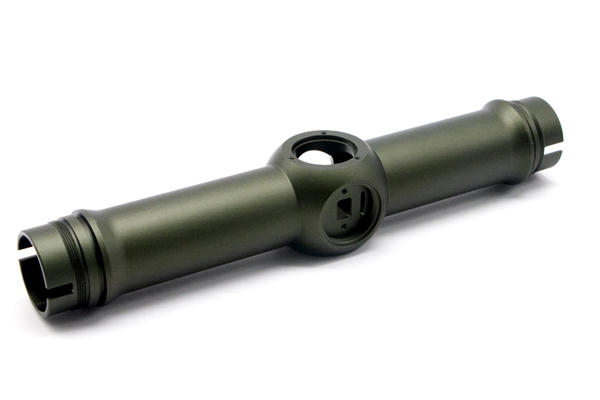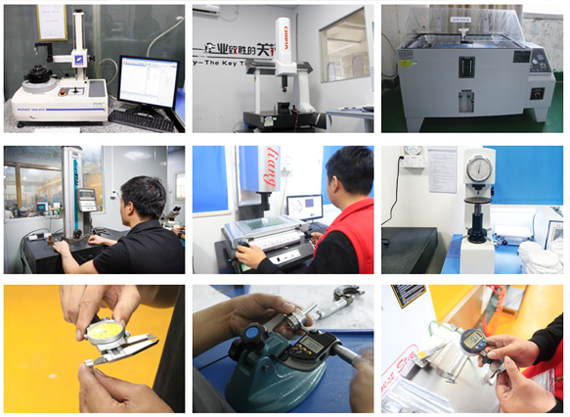15 years one-stop China custom CNC machining parts factory

Hey there I’m VMT Sam!
With 25 years of CNC machining experience we are committed to helping clients overcome 10000 complex part-processing challenges all to contribute to a better life through intelligent manufacturing. Contact us now
 117 |
Published by VMT at Apr 21 2024
117 |
Published by VMT at Apr 21 2024
In the field of CNC machining, machining optical precision components has always been a challenge and focus due to their special requirements for high precision and surface quality. After completing a series of complex machining processes, testing the material hardness becomes an indispensable step. This article will delve into the reasons why measuring material hardness is necessary after machining optical precision components from multiple perspectives, aiming to meet the professional knowledge needs of CNC machining factories and related practitioners for manufacturing high-precision, high-quality CNC machined parts.

Relationship between Hardness Testing and Performance of Optical Precision Components
Hardness is an important indicator of material mechanical properties, reflecting the material's ability to resist deformation or failure under external forces. For optical precision components, which need to withstand various complex mechanical environments such as friction and impact during use, hardness directly affects key performance factors such as wear resistance, compressive strength, and fatigue resistance. Through hardness testing, the performance of components can be accurately evaluated, providing important basis for subsequent use and maintenance.

Ensuring Accuracy and Quality of Component Machining
The machining accuracy and quality of optical precision components are crucial for their performance. During the machining process, deviations between the actual hardness of the component and the expected value may occur due to various factors such as material, process, and equipment. Hardness testing can timely identify these deviations, allowing adjustments to machining parameters or implementation of other remedial measures to ensure that the machining accuracy and quality of components meet design requirements.
Preventing Potential Safety Hazards
Components with insufficient hardness are prone to deformation, fracture, and other failures during use, which not only affects the normal operation of equipment but may also lead to safety accidents. Through hardness testing, potential safety hazards can be identified before the components are put into use, and preventive measures can be taken in a timely manner to avoid accidents.
Optimizing Machining Processes and Material Selection
The results of hardness testing can provide valuable feedback for CNC machining factories, helping to optimize machining processes and material selection. For example, based on the hardness test results, factories can adjust cutting parameters, select more suitable tools or cooling fluids to improve machining efficiency and component quality. Meanwhile, hardness testing can also provide a basis for material selection, assisting factories in selecting materials that are more suitable for machining optical precision components.

Hardness Testing Methods and Equipment Selection
Commonly used hardness testing methods for optical precision components after machining include Rockwell hardness testing, Vickers hardness testing, Brinell hardness testing, etc. These methods have their own characteristics and are suitable for different types of materials and components. The selection of testing equipment is also crucial, ensuring that the equipment has good accuracy and stability to meet the requirements of high-precision hardness testing. In addition, with the advancement of technology, some new hardness testing techniques and equipment, such as electronic universal testing machine method, scratch method, etc., continue to emerge, providing more choices for hardness testing after machining optical precision components.

Standardized Operation and Precautions for Hardness Testing
During hardness testing after machining optical precision components, it is necessary to follow certain standardized operating procedures. Firstly, ensure that the surface of the test sample is clean, flat, and free of oil stains, impurities, etc. Secondly, choose appropriate testing methods and parameters to ensure the accuracy and reliability of the test results. At the same time, testing personnel should have certain professional knowledge and skills to correctly operate the testing equipment and interpret the test results. In addition, attention should be paid to safety issues during the testing process, such as avoiding the use of excessive test force that may cause damage to components or equipment failure.
In summary, measuring material hardness after machining optical precision components is an important step to ensure the performance, accuracy, and quality of components. Through hardness testing, the performance of components can be evaluated, potential safety hazards can be prevented, machining processes and material selection can be optimized, providing strong technical support for CNC machining factories. Therefore, CNC machining factories and related practitioners should fully recognize the importance of hardness testing and apply it in practical production.
In future development, with the continuous advancement of manufacturing technology and the changing market demand for optical precision components, hardness testing techniques and methods will continue to be updated and improved. CNC machining factories should closely follow industry trends and technological development trends, timely introduce and apply advanced hardness testing techniques and equipment to improve their competitiveness and market share. Meanwhile, it is also necessary to strengthen cooperation and communication with other fields, jointly promote the development and innovation of optical precision component manufacturing technology.
Ready To Start Your Next Project?
Get Instant Quote

Request a Free Quote
Send us a message if you have any questions or request a quote. We will get back to you ASAP!